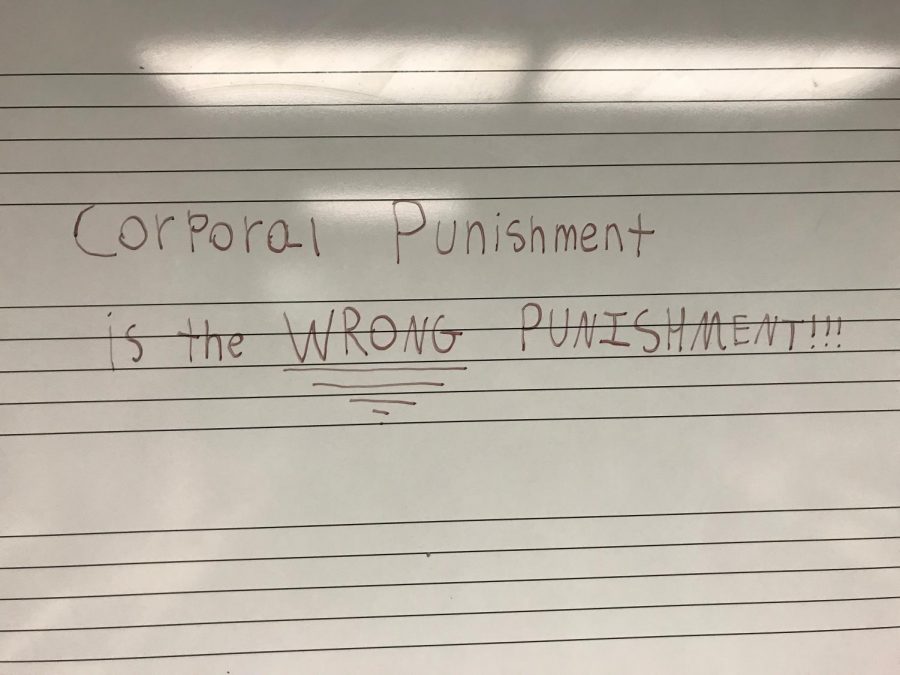Is Corporal Punishment the right punishment?
Discussing the pros and cons of a highly debated topic
March 21, 2018
Students need discipline when they have broken the school rules, but this discipline should never become physical. Whether it be paddling or physically hitting students, it should not be allowed. If adults and staff members in school preach that violence is never the answer, it is considered hypocritical to use violence for a punishment.
Instead of putting their hands on students, teachers and staff should be working on verbally communicating with students and talking to parents to make sure that appropriate action is taken at home for behavioral issues.
Looking back at a case from 1977, the Ingraham v. Wright case deals with an example of the brutality of corporal punishment. James Ingraham of Drew Junior High School in Miami was paddled excessively after he refused to be punished for allegedly being disruptive in the school’s auditorium. After the punishment, James stayed out of school for 10 days due to the bruises from the paddling and needed medical attention. James and his parents decided to sue the school for violating the Eighth Amendment which bans “cruel and unusual punishments”. James and his family took their case to the Supreme Court, which ruled against them stating that the Eighth Amendment is designed to protect criminals at the hands of the government and not for schoolchildren. The outcome of this case is what permits corporal punishment to be used in schools.
Regardless of the Supreme Court’s decision, many states today ban corporal punishment, although 18 states still allow it to be administered within schools. According to studies from National Public Radio Inc. the 2013-2014 school year saw around 109,000 students being punished using corporal punishment. These reports have also shown that usage of paddling can lead to a higher rate of dropouts in school and an increase in substance abuse and depression in students.
While some may say that the use of corporal punishment can make students stronger and can get discipline through their heads, it should not be allowed in any high schools in the United States due to the physical and mental health risks it can pose. If a student needed to seek medical attention after having corporal punishment used on them, then something in that school system is wrong. Many people may think that corporal punishment is completely outlawed in the United States as a whole, but they would be sorely mistaken. If we want to have a good connection with the students that attend our schools, then administrators should never think about putting their hands or punishing instruments on a student instead of a proper and civilized method of discipline.


